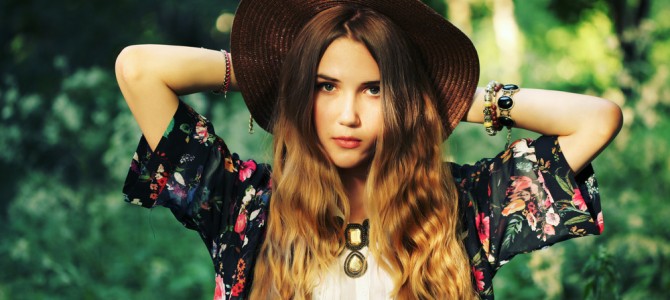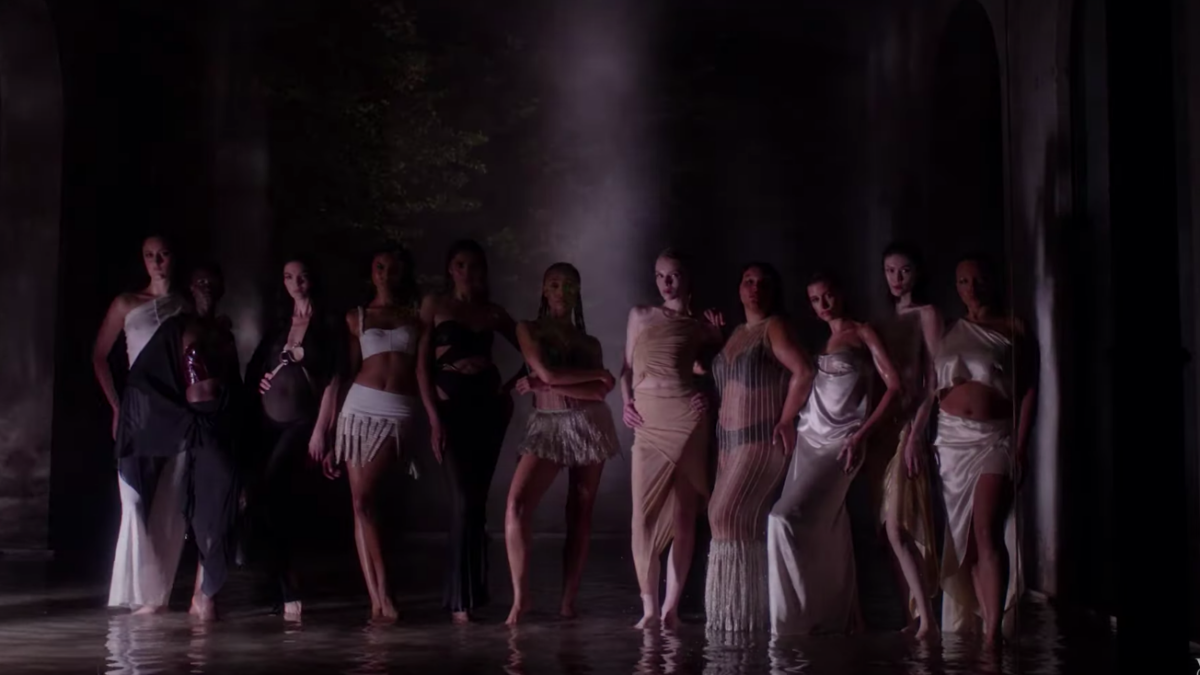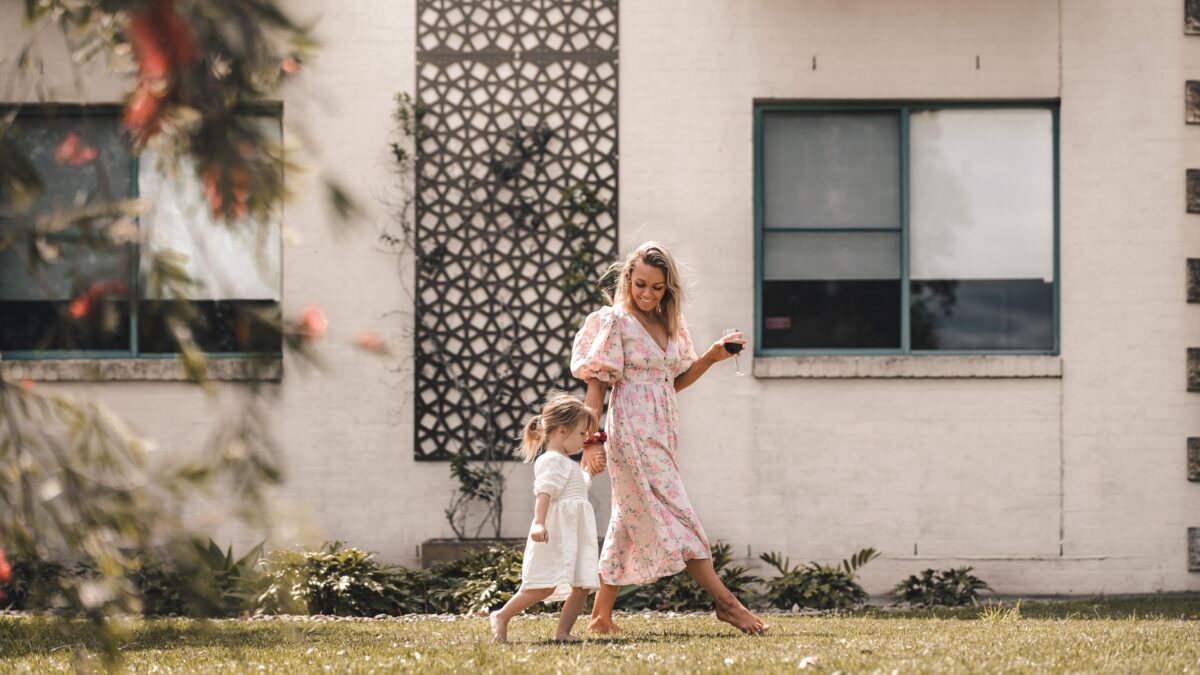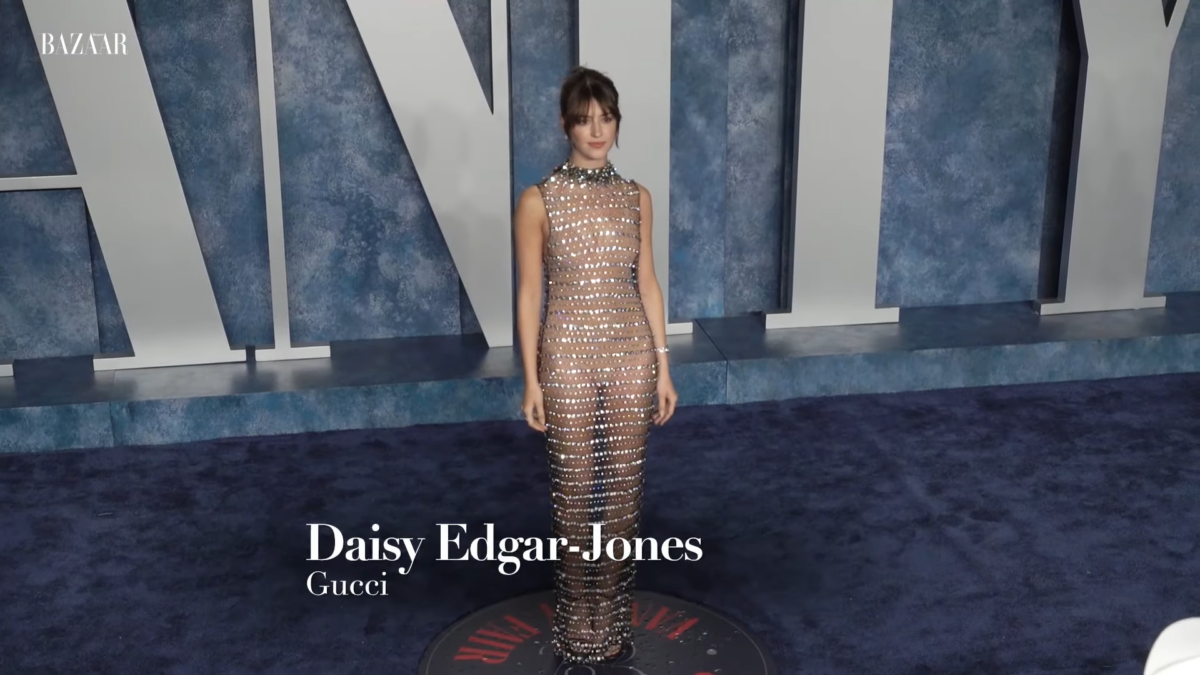
“Your mother thinks you dress like a ‘hippie,’ your boyfriend thinks every dress you have ‘looks like a sack’ and your best friends all dress just like you do—as a grown-up love child.” —“21 Reasons You Know Your Style Is…Boho Chic,” Harper’s Bazaar, February 2014
It’s had an unfortunate, recurring presence in fashion since at least the early nineties. At the height of its popularity, we saw the likes of Kate Moss and Sienna Miller swathed head to toe in sartorial smorgasbords of the stuff: paisley prints; floppy, wide-brimmed hats; headbands worn flower-child style across the forehead; shaggy vests and ill-fitting ponchos; shapeless dresses with garish floral motifs; gladiator sandals; bulky scarf-like garments made of indeterminate furs; beads, embroidery, and fringe galore. Celebrities from Oprah Winfrey to Leonardo di Caprio were parading around in those cumbersome sheepskin Ugg boots.
It’s waxed and waned over the years, but its influence has never quite disappeared from the average young professional woman’s wardrobe.
For the most part, fashion magazines were quick to embrace this new “bohemian chic”—or boho chic, for short—when it really took off about a decade ago. A few were critical, even snide. Amanda Fortini railed against ponchos—which she called “burlap sack[s]” and “the hideous new trend afflicting America”—in Slate. The New York Times, in a 2005 piece on the influence of actress and boho chic ringleader Mary Kate Olsen, referred to the trend as “dumpster dressing,” “ashcan chic,” and “Bobo style”—the last an allusion to David Brooks’ book “Bobos in Paradise,” about the rise of the seemingly paradoxical bourgeois bohemian (bobo) culture.
Like the Seventies, But Uglier
But fashion-forward young women ignored such high-minded critiques and flocked to the bohemian regurgitations that trickled down into retail. Pretty soon hordes of teenage girls were festooning themselves in the discordant trappings of the impoverished hobo, with less aesthetic contemplation than one would put into garnishing a salad.
The old maxim “less is more” was willfully flouted. At the height of boho chic in the mid-aughts, more was more: more beads, more fringe, more fur, more paisley, more ethnic prints, more studded boots! Bigger, floppier sweaters and cardigans! More unkempt flowing hair! More maxi skirts and macramé—whose comeback bewildered the Baby Boomer generation of mothers presiding over their aspiring bohemian chiclet daughters.
“The things we wore in the seventies were so ugly,” my mother told me once when I was in high school. “Those clashing prints and horrible polyesters! I can’t see why it’s coming back.” She had been cleaning out the closet and stumbled across a box of college-era photographs of her friends, their twenty-something likenesses replete with shag cuts, fringed jackets, hot pants, and peasant tops. There may have been macramé lurking in there somewhere.
Ugly and uncomfortable the garments may have been, but looking at the snapshots, I actually thought the collegiate look circa 1975 was charming. Maybe it was just the sepia tint of those old 35mm pictures. You knew what you were getting, looking at them. It was pure mid-1970s shaggy-campus chic, that stylistic sweet spot somewhere between “Hair” and “Saturday Night Fever”: no one looked like he or she routinely abstained from bathing, nor, mercifully, was anyone wearing a leisure suit.
They were having a picnic, probably on a fall weekend, judging by the foliage and the festive air. The women were bra-less, with immaculately feathered hair. The young men had substantial sideburns, and one of them even wore a wondrous pair of Hunter S. Thompsonesque tea shades. Sure, you could easily spot a grubby hipster approximation of this while wandering through Brooklyn these days, but there was a touching sincerity to the way these smiling coeds of the past had styled themselves. There was no air of irony here. They were wearing this stuff not because it was so ugly that it managed to transcend ugliness into the realm of hipdom; they were wearing it because they actually thought it was cool.
I’m Wearing Goodwill Rejects
The problem is that although contemporary boho chic draws on some of the fun countercultural vibes of that era, it spoils the effect by mixing it with a smattering of grunge, a dash of the pre-Raphaelite, a historic Bohemian/Roma flair, sometimes a little English country style, and a jumble of ethnic influences (Moroccan prints, kaftans, kimonos, etc.)
It’s as if one set out to make a simple chocolate cake, but then got carried away and started throwing in a bunch of other exotic flavors, say, lemon, coconut, ginger, chili pepper, hazelnut, harissa, basil, cinnamon—any of which would taste fine in its own dish, but mixed all together creates an unpalatable mess. Boho chic looks like something that can’t quite make up its mind what it is.
Because the hippie influence is so contaminated and watered down, with twenty-first century boho chic there’s also none of the carefree, spontaneous spirit of the ’70s. Today’s boho chiclet works quite meticulously at piecing together her ensemble, taking care not to wear too many or too-long layers, possibly selecting sub-categories of bohemian chic (“boho urban/rock;” “boho/sporty”), even taking a color test to see which earthy colors suit her best.
This sucks all the sex appeal out of the flower-child throwback attempt. Do you think Janis Joplin stood in front of her mirror for hours, contemplating whether an olive-colored fringe suede dress was too strong for her skin tone, and whether she could throw on a leather jacket or cardigan without it “dragging her frame down”? It just doesn’t gel with the un-self-conscious artlessness of the free-spirited women that boho chic tries to evoke.
Yes, I’m Really a Nonconformist
The whole phenomenon also smacks of middle-class champagne socialism: affluent young women shell out $532 for an “ethereal sheer maxi dress,” upwards of $100 for distressed jeans, or other exorbitant amounts for peasanty garments that connote the countercultural, anti-establishment, and anti-consumerist attitudes of the ’60s and ’70s.
Ironically, clothing that historically signaled one’s poverty, marginal status, and rebellion against the perceived materialist, bourgeois values of mainstream American society has become a staple of solidly middle-class, professional young women. It’s reminiscent of the hipster penchant for fetishizing “Pabst Blue Ribbon Beer and Parliament cigarettes…symbols and icons of working or revolutionary classes.”
Boho chic “seems to address the discomfort of a younger generation with overt displays of wealth,” wrote Ruth LaFerla in The New York Times article mentioned previously. That was about ten years ago. Since then, the American Left has become increasingly obsessed and paranoid about the scourge of privilege.
Perhaps, for financially comfortable young white females who have been subjected to a barrage of college lectures on white privilege, boho chic is a way to downplay the inherent “privilege” of their race and class. Today’s bohemian may be a gainfully employed, Starbucks-sipping former sorority sister with the latest iPhone and an expensive studio apartment paid for by her parents, but wearing a dress that looks like a dusty old sack and a beaded headdress will proclaim to everyone that at least her politics are sufficiently radical and nonconformist.
That’s assuming that young women are even giving it much thought at all, as opposed to simply mimicking what the glossy magazines peddle. There’s a mindless quality to the bastardization of the old countercultural into the new bohemian that raises suspicions that the popularity of the style is just due to lack of imagination.
I’m Just Bored and Out of Ideas
I’ve written before about young women consciously emulating old-school pinup styles with the intent of appearing attractive to men and replicating traditional gender roles. Of course, it’s debatable whether that’s really the intention with women who dress “retro-sexist,” but there’s something less deliberate about boho chic.
Maybe because the latter is more ubiquitous. Maybe because while we can conceive of a young woman wanting to dress up like “Mad Men’s” Joan Harris to snag a husband, it seems more of a stretch to think she would dress like a hippie because she wants to join a commune and practice free love or bomb government buildings like 1970s domestic terrorist Bernardine Dohrn.* Funny that radical feminists are quick to accuse women who look too feminine of “reviving sexism,” when surely they would find it absurd to accuse young women who wear recycled hippie styles of “reviving domestic terrorism.”
Lastly, it’s difficult to imagine why anyone who wasn’t pregnant or homeless would choose to sport such an unflattering pastiche of garments. Boho chic is almost the antithesis to the polished, put-together “retro-sexist” look that vintage aficionados favor. To be clear, there’s certainly a way to wear vintage love child-era threads that look glamorous and tasteful. But boho chic, with its muddled stew of influences and aesthetics, is bland, frumpy, clumpy, and unflattering. It also consistently ranks in surveys of men regarding which women’s fashion trends they despise the most. (See here, here, and here.) The men seem as perplexed by the whole thing as I am.
Boho chic is fashion less as a reflective, well-considered choice as a mode of expression of oneself, and more of an insipid, lemming-like approach to style. It’s sartorial laziness, a reflexive rather than reflective approach to style and individuality. Hopefully it fades out of favor soon—the way it seemed poised to in 2006 when boho chic poster girl Sienna Miller grumbled to Vogue: “No more boho chic! Those two words make me sick now….I don’t want to wear anything floaty or coin-belty ever again.”









